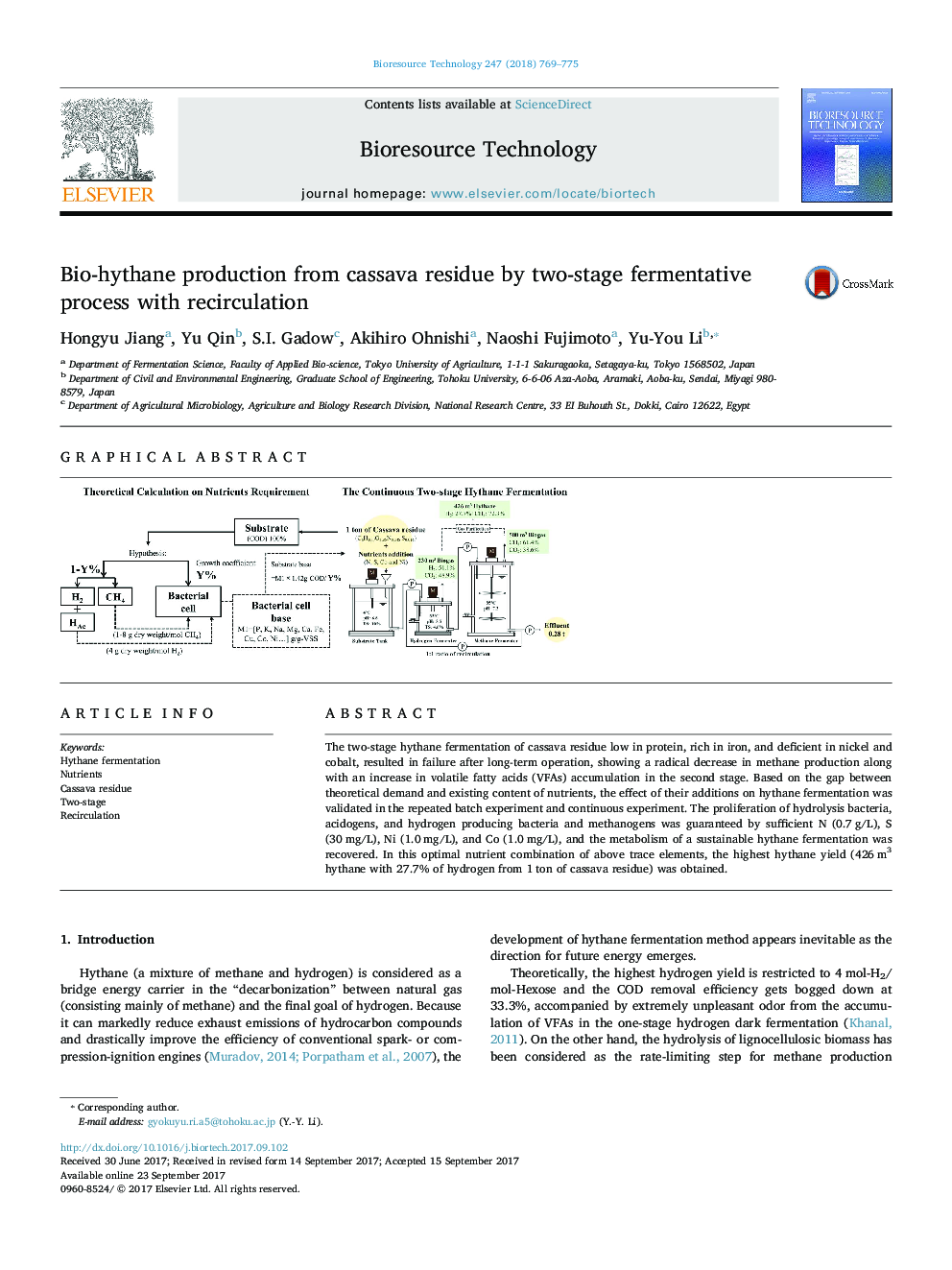| Article ID | Journal | Published Year | Pages | File Type |
|---|---|---|---|---|
| 4996704 | Bioresource Technology | 2018 | 7 Pages |
â¢Theoretical calculation on nutrient demands in hythane fermentation was defined.â¢Nitrogen supplementation was essential for long-term hythane fermentation.â¢The 30 mg/L of S addition facilitated methane production rate effectively.â¢The highest hythane yield was obtained in combination of N, S, Ni, and Co addition.â¢The 27.7% of H2 in hythane fitly matched up with the preferred mixture percentage.
The two-stage hythane fermentation of cassava residue low in protein, rich in iron, and deficient in nickel and cobalt, resulted in failure after long-term operation, showing a radical decrease in methane production along with an increase in volatile fatty acids (VFAs) accumulation in the second stage. Based on the gap between theoretical demand and existing content of nutrients, the effect of their additions on hythane fermentation was validated in the repeated batch experiment and continuous experiment. The proliferation of hydrolysis bacteria, acidogens, and hydrogen producing bacteria and methanogens was guaranteed by sufficient N (0.7Â g/L), S (30Â mg/L), Ni (1.0Â mg/L), and Co (1.0Â mg/L), and the metabolism of a sustainable hythane fermentation was recovered. In this optimal nutrient combination of above trace elements, the highest hythane yield (426Â m3 hythane with 27.7% of hydrogen from 1Â ton of cassava residue) was obtained.
Graphical abstractDownload high-res image (206KB)Download full-size image
